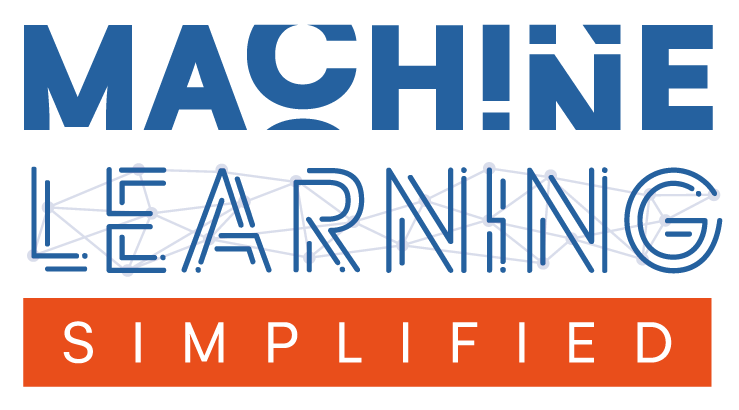Evaluation Metrics for Regression#
This is a supplement material for the Machine Learning Simplified book. It sheds light on Python implementations of the topics discussed while all detailed explanations can be found in the book.
I also assume you know Python syntax and how it works. If you don’t, I highly recommend you to take a break and get introduced to the language before going forward with my code.
This material can be downloaded as a Jupyter notebook (Download button in the upper-right corner ->
.ipynb) to reproduce the code and play around with it.
This notebook is a supplement for Chapter 13. Model Evaluation of Machine Learning For Everyone book.
1. Required Libraries#
This block imports all necessary libraries.
import numpy as np
from sklearn.datasets import make_regression
from sklearn.model_selection import train_test_split
from sklearn.linear_model import LinearRegression
from sklearn.metrics import mean_squared_error, r2_score
2. Univariate Regression#
Generate synthetic data for Univariate Regression using sklearn.datasets.make_regression
# Univariate Regression: 1 feature
X_uni, y_uni = make_regression(n_samples=100, n_features=1, noise=0.1, random_state=42)
X_train_uni, X_test_uni, y_train_uni, y_test_uni = train_test_split(X_uni, y_uni, test_size=0.2, random_state=42)
Next step is to train a regression model (LinearRegression)
# Univariate Model
model_uni = LinearRegression()
model_uni.fit(X_train_uni, y_train_uni)
LinearRegression()In a Jupyter environment, please rerun this cell to show the HTML representation or trust the notebook.
On GitHub, the HTML representation is unable to render, please try loading this page with nbviewer.org.
LinearRegression()
Finally, to evaluate the model, we calculate the predicted values made by a model.
# Predictions
y_pred_uni = model_uni.predict(X_test_uni)
2.1. Mean Squated Error#
mse_uni = mean_squared_error(y_test_uni, y_pred_uni)
print("Mean Squared Error (MSE):", mse_uni)
Mean Squared Error (MSE): 0.010420222653186971
2.2. R-squared#
r2_uni = r2_score(y_test_uni, y_pred_uni)
print("R-squared (R²):", r2_uni)
R-squared (R²): 0.9999925261586983
3. Multivariate Regression#
Generate synthetic data for Univariate Regression using sklearn.datasets.make_regression
# Multivariate Regression: 3 features
X_multi, y_multi = make_regression(n_samples=100, n_features=3, noise=0.1, random_state=42)
X_train_multi, X_test_multi, y_train_multi, y_test_multi = train_test_split(X_multi, y_multi, test_size=0.2, random_state=42)
Next step is to train a regression model (LinearRegression)
# Multivariate Model
model_multi = LinearRegression()
model_multi.fit(X_train_multi, y_train_multi)
LinearRegression()In a Jupyter environment, please rerun this cell to show the HTML representation or trust the notebook.
On GitHub, the HTML representation is unable to render, please try loading this page with nbviewer.org.
LinearRegression()
Finally, to evaluate the model, we calculate the predicted values made by a model.
# Predictions
y_pred_multi = model_multi.predict(X_test_multi)
3.1. MSE and R-squared#
# MSE and R-squared
mse_multi = mean_squared_error(y_test_multi, y_pred_multi)
r2_multi = r2_score(y_test_multi, y_pred_multi)
print("Mean Squared Error (MSE):", mse_multi)
print("R-squared (R²):", r2_multi)
Mean Squared Error (MSE): 0.012384680824798728
R-squared (R²): 0.9999982803305351
3.2. Adjusted R-squared#
# Adjusted R-squared
n = len(y_test_multi) # number of data points
p = X_test_multi.shape[1] # number of predictors
adj_r2_multi = 1 - (1 - r2_multi) * ((n - 1) / (n - p - 1))
print("Adjusted R-squared:", adj_r2_multi)
Adjusted R-squared: 0.9999979578925103
